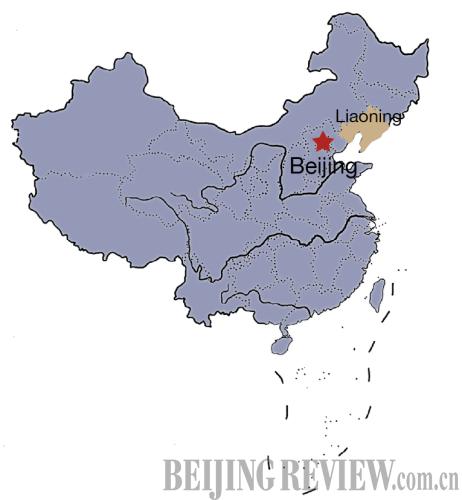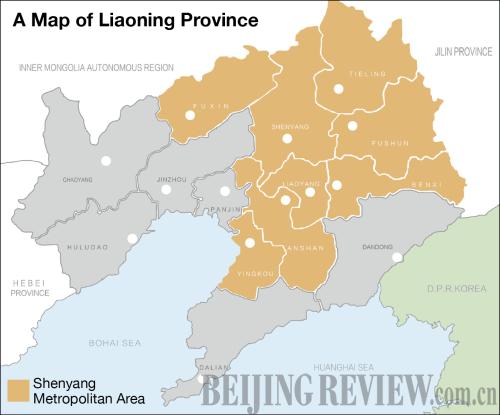|
Some new cities are focused on the leisure industry, and offer hot springs resorts and similar attractions for visitors. In addition, he said, the area is great for skiing and other winter recreation, and the city of Panjin is home to the world's second largest wetlands.
Of course, a handful of specific area attractions set the tone for a trip to Liaoning. At the Benxi Water Cave, guests can dodge stalactites while taking a boat trip through a 3,000-meter long underground cave. At Anshan's Jade Buddha Garden, visitors can find the world's largest jade Buddha statue, which measures 7.9 meters tall and is carved from a piece of jade that tips the scales at just over 260 tons. Finally, Liaoyang is home to the White Pagoda, an eight-century old, 61-meter tall building that offers a window into China's storied past.
Future prospects
Though Liaoning is still overcoming a rough history, the future is already looking bright. The industrial processes that helped form Liaoning's initial economic structure also produced quite a bit of environmental pollution, but as environmental awareness has grown, the province has made strong efforts to buckle down and deal with the issue. The provincial government has shut down a number of companies with outmoded production facilities in the steel, coke, chemical fiber and electric power sectors, among others. In the past few years, more than 1,000 factories with outmoded facilities have been closed.
Sulfur dioxide is a chemical compound and pollutant that is often emitted during industrial processes, according to the Ministry of Environmental Protection, 1.1 million tons of it was discharged in Liaoning in 2009. That number marks a 7-percent drop from 2008 and a more than 12-percent drop from 2005.
Liaoning is actively leaving its past behind, as the aged, heavily polluting industries are being ever-more rapidly replaced with new, cleaner, hi-tech industries focused on achieving a more efficient utilization of human resources. Companies from around the country are relocating or expanding to Liaoning, where land prices and wages are often lower than in most of southern China.
In addition, the province is drawing foreign interest and investment, with most of it flowing from South Korea, Japan and Russia. Last June, BMW Brilliance Automotive Ltd., a joint venture between BMW Group and Brilliance China Automotive Holdings Ltd., began construction on its second factory in Shenyang. Norbert Reithofer, Chairman of BMW AG, said when construction is completed in 2012, the annual production capacity of the $73 million factory will be 100,000 units, boosting the Shenyang-based company's total production capacity to 140,000 units.
BMW Brilliance is just one example in a larger trend, and in 2009, a total of 701 foreign-invested enterprises were approved in Shenyang alone. That is a year-on-year increase of 37 percent. As these companies move in, they are both targeting Liaoning's largely untapped consumer market and creating employment for the locals that have struggled through the economic hardship of the past decade. The ranks of the employed have been growing and the millions of unemployed workers from just a few years ago are now only a memory. In 2003, the provincial unemployment rate stood at 8.5 percent. Within six years, that number had dropped to less than 4 percent and the numbers in some areas are even better. Anshan, for example, currently has an unemployment rate of just 2 percent.
Around the province, farmers, many of whom have long been at odds with their industrial neighbors, have been relocated into brand new, modern apartment buildings. Many of them have found new employment locally as taxi drivers and cleaning company employees, and many more have picked up jobs with the new companies. After being vacated, their old farmland is being utilized for the further development of industry.
And despite the area's recent history, the Liaoning Provincial Government is hoping the economic overhaul that they are shepherding will hike up population numbers, as well. The eight cities that are part of the Shenyang Metropolitan Area currently have a total urban population of just over 12 million people. Projections indicate that the number will increase to nearly 18 million by 2020, and the new cities constructed within the same framework will add even more people. Twenty-five of the planned new cities will each be home to approximately 100,000 residents, while eight others are each slated to have populations of about 50,000.
The Shenyang Metropolitan Area
Total area: 75,000 square km
Population: 23.59 million
GDP (2009): 998.5 billion yuan ($150.8 billion)
Urbanization rate: 65 %
(Source: Liaoning Provincial Development and Reform Commission)


|
